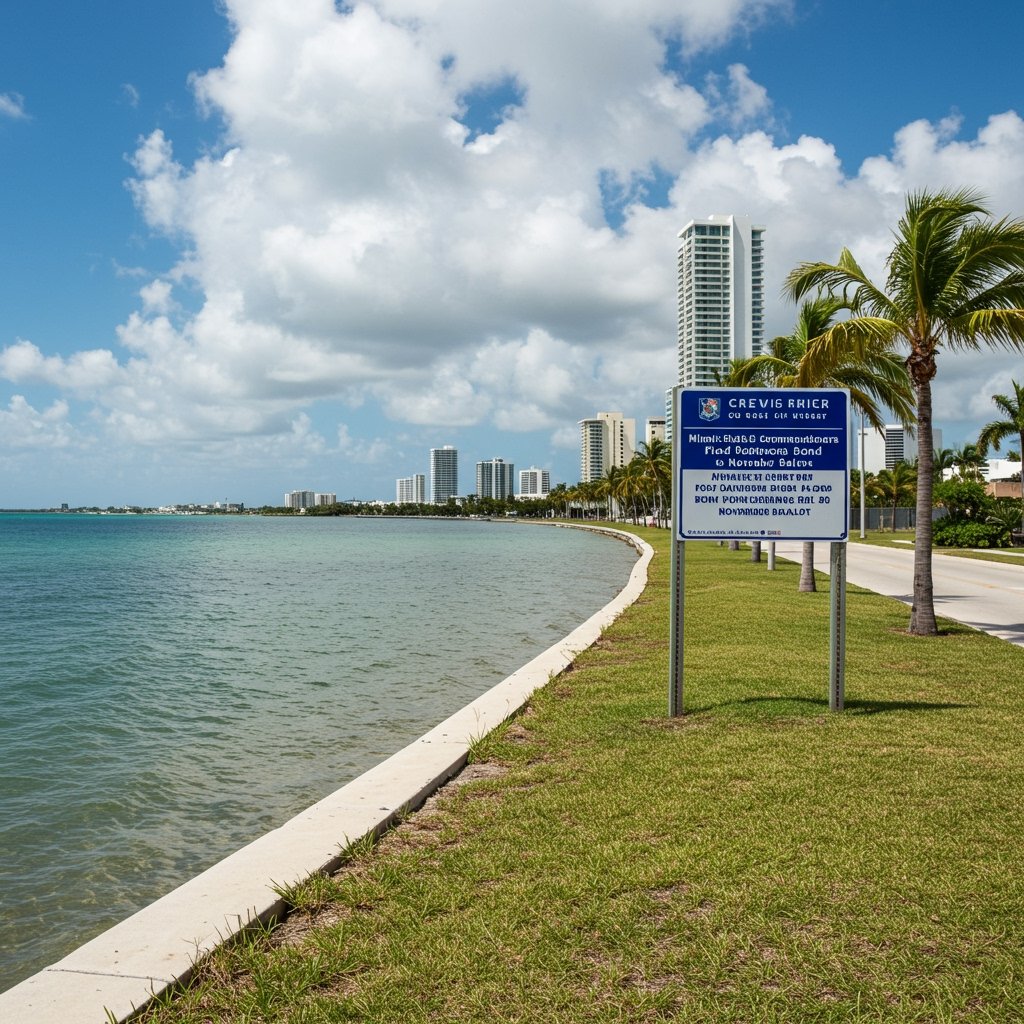Miami-Dade Commissioners Advance $500M Flood Resilience Bond to November Ballot
MIAMI-DADE, FL – In a pivotal vote on June 8, 2025, the Miami-Dade County Commission approved a measure to place a substantial $500 million general obligation bond referendum before voters on the upcoming November 2025 election ballot. This significant proposed investment is specifically earmarked to address the escalating challenges posed by sea-level rise and increasingly potent storm surges, funding crucial flood resilience and infrastructure projects throughout the county’s most vulnerable, low-lying areas.
The decision follows extensive deliberation on the urgent need for proactive measures to protect coastal and inland communities from the impacts of climate change. Miami-Dade County, with its vast stretches of low elevation, faces direct threats to its infrastructure, economy, and resident safety from rising water levels and more frequent, intense flooding events.
Addressing the Growing Threat of Flooding
The impetus behind the $500 million bond proposal stems from scientific projections and lived experiences of increased flooding. Coastal erosion, saltwater intrusion into freshwater supplies, and inundation during high tides and storm events are becoming more commonplace. Existing infrastructure, often designed for historical climate conditions, is proving insufficient to handle current and future water management needs. The proposed bond is designed to provide a dedicated funding stream specifically for projects aimed at fortifying the county’s defenses against these threats.
General obligation bonds, if approved by voters, are typically repaid through property taxes. This structure provides a reliable repayment source, allowing the county to borrow large sums at potentially favorable interest rates for capital-intensive projects that would be difficult or impossible to fund through the annual operating budget alone. The $500 million would represent one of the largest single local investments in climate adaptation and flood resilience in the county’s history.
Proposed Projects: A Multi-faceted Approach
The scope of projects envisioned under the bond is broad, reflecting the multifaceted nature of flood resilience. Key initiatives include the upgrading of existing pump stations and the construction of new ones in flood-prone areas. These stations are critical for moving large volumes of water during rain events and high tides, preventing prolonged street flooding and protecting properties. Many of the county’s current pump systems require modernization to increase capacity and improve reliability.
Another critical component is the repair and enhancement of aging seawalls. Seawalls serve as a primary barrier against coastal inundation, but many are deteriorating or are not high enough to contend with current and projected sea levels. The bond funds would support significant investments in fortifying these essential structures along the county’s extensive coastline and waterways.
Importantly, the proposal also emphasizes implementing natural infrastructure solutions. These nature-based approaches leverage ecosystems to provide protection and other environmental benefits. A prime example cited is mangrove planting, which creates natural buffers that absorb wave energy, trap sediment, and provide habitat. Such initiatives are planned for particularly vulnerable areas like Shorecrest and Cutler Bay, demonstrating a strategy that combines traditional engineering with ecological restoration.
The Commission’s Debate and Rationale
The path to getting the referendum on the ballot was not without debate among commissioners. While there was general consensus on the need for significant investment in flood resilience, some commissioner concerns were raised regarding the potential impact on property owners. Servicing the debt incurred by a $500 million general obligation bond would necessitate a corresponding property tax increase. The exact amount of the increase would depend on the bond’s terms and the county’s overall tax base at the time.
Critics of the bond proposal voiced reservations about adding to the financial burden on residents, particularly in the current economic climate. They questioned whether alternative funding mechanisms could be explored or if the project scope could be phased differently to mitigate the immediate tax impact.
However, proponents of the bond measure, who ultimately secured the majority vote on June 8, 2025, strongly emphasized the long-term economic and safety benefits of proactive adaptation. They argued that the cost of inaction – including damages from future floods, loss of property value, disruption to businesses, and potential threats to life – would far exceed the cost of the bond over time. Investing now, they contended, is an essential measure for safeguarding Miami-Dade’s future prosperity and livability. The bond represents a critical step towards building a more resilient county capable of withstanding the environmental challenges ahead.
With the commission’s approval, the focus now shifts to the voters. The November 2025 election ballot will present residents with the decision on whether to authorize the $500 million general obligation bond, effectively weighing the immediate financial implications against the long-term imperative of flood resilience.





